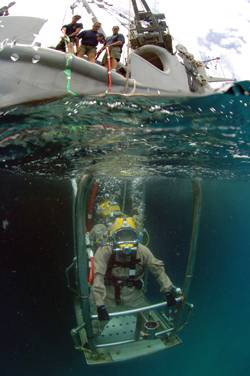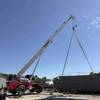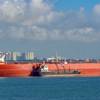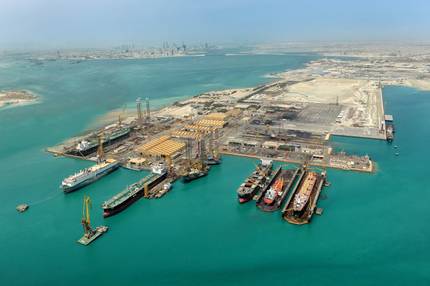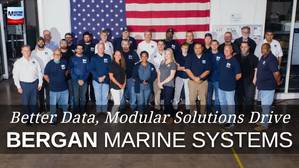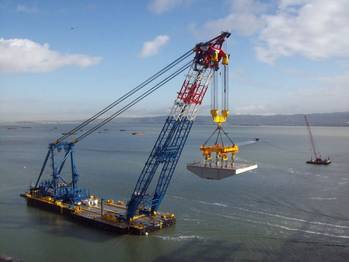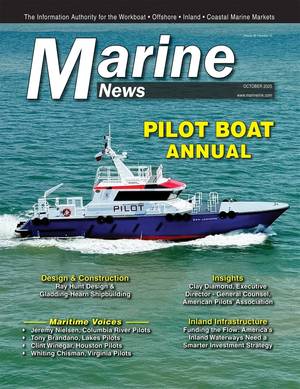Salvage and marine firefighting
On New Year’s Eve, 2008, the US Coast Guard issued its long-awaited regulations regarding salvage and marine firefighting. While there are various points of criticism, overall the rulemaking is an excellent advance over the current situation of preparing in advance for marine casualties that implicate salvage and firefighting. The owners or operators of a tank vessel that carries or is designed to carry Group I-IV oils as cargo in bulk has until July 1, 2010 to revise its vessel response plan (VRP) and submit it to the Coast Guard for consideration and approval. Following is a summary of some of the major issues on this topic.
The VRP requirement was established by the Oil Pollution Act of 1990 (OPA 90). The statute provides, in pertinent part, that the VRP shall: (1) be consistent with the National Contingency Plan and the Area Contingency Plans; (2) identify the qualified individual having full authority to implement the plan; (3) identify and ensure by contract or other approved means the availability of private personnel and equipment necessary to respond to the maximum extent practicable a worse case discharge (including a discharge resulting from fire or explosion); (4) describe the training, equipment testing, periodic unannounced drills, and response actions of persons on the vessel; (5) be updated periodically; and (6) be resubmitted for approval of each significant change. The salvage and marine firefighting requirement was addressed in a vague provision in the original VRP interim rule issued in 1993 requiring only that the plan identify a salvage company with expertise and equipment and a company with vessel firefighting capability that agree to be so listed as available resources. The interim rulemaking, which assumed a shortage of sufficient salvage and marine firefighting assets nationwide, included a provision stating that in 1998 (five years after promulgation of the initial rule), the salvage and marine firefighting resources must be capable of being deployed to the port nearest to the area where the vessel operates within 24 hours of notification. Based upon, in part, the results of a regulatory assessment by the , the effective date of this latter provision has been suspended and deferred continually since 1998. It has now been replaced by this new rulemaking.
A major point to be noted in this rulemaking is that it establishes planning criteria, not performance standards. The rule specifically states that it is based on assumptions that may not exist during an actual incident, while requiring that a primary response provider is obligated to respond when called. Compliance with the regulations is based upon whether a covered response plan ensures that adequate resources are available, not on whether the actual performance of those response resources after an incident meets specified arrival times or other planning criteria. Failure to meet specified criteria during an actual salvage response does not necessarily mean that the planning requirements of the statute or regulations were not met. The Coast Guard will exercise its enforcement discretion in light of all facts and circumstances. This policy is not new. It was first articulated (in fewer words) in the 1993 interim rule. The Coast Guard might consider transposing this lengthier version of the policy into the general section of the VRP rule, rather than having it only in the salvage and marine firefighting portion.
The new, detailed salvage and marine firefighting regulations apply only to those tank vessels that carry Group I-IV oils and are required by 33 CFR § 155.1015 to have a VRP. Thus, exempted from this planning requirement are: (1) tank vessels that carry Group V oils; (2) tank vessels that carry animal fats and vegetable oils as a primary cargo; (3) tank vessels carrying other non-petroleum oils as a primary cargo; and (4) nontank vessels carrying petroleum as a fuel (bunkers). The Coast Guard brushes over this gap in applicability, noting only that the VRP regulations for nontank vessels have yet to be promulgated. As the Coast Guard acknowledges, the threat of oil spills from nontank vessels (and from the exempted tank vessels) can be as great as that from many covered tank vessels. All indicators are that the Coast Guard is moving to broaden the coverage of the salvage and marine firefighting regulation to address the exempted vessels.
The salvage and marine firefighting regulation has adopted a methodology for determining the adequacy of identified resources that differs from that utilized in the other portions of the VRP regulations. The usual method relates to what are referred to as oil spill removal organizations (OSROs). If the VRP utilizes an OSRO that has been classified by the Coast Guard as capable of responding to that particular type of oil spill in that Captain of the Port (COTP) zone, then the vessel owner/operator is not required to verify or document the adequacy of the OSRO. If a response resource that is not a classified OSRO is utilized, then the vessel owner/operator has the burden of showing the adequacy of the identified responder. The salvage and marine firefighting regulation, on the other hand, includes a list of 15 selection criteria that must be utilized by the vessel owner/operator in selecting a resource provider. These include, but are not limited to, whether the resource provider is currently working in the response service needed; whether it has a documented history of participation in successful salvage and/or marine firefighting; whether it owns or has contracts for the needed equipment; and whether it has personnel with documented training certification and degree experience. The owner or operator must certify that all 15 factors were considered which the resource provider was chosen. This change in methodology is clearly an effort to shift the evaluation burden from the Coast Guard to the vessel owner/operator. Due to their ever-increasing mission requirements, without a proportional increase in budget or manpower, the Coast Guard must make this tactical change from their historical preference for a “hands on” confirmation process. Further, at the end of the day, in accordance with the intent, if not the specific wording, of the salvage and marine firefighting regulations, the responsibility for a casualty response begins and ends with the owner/operator.
Rather than the across the board approach of the original proposal, the new rulemaking adopts a varying incident response timeframe, depending on the particular salvage or marine firefighting service involved. The majority of the services must be capable of responding within 18 or 24 hours, but some response times vary from one (1) hour for remote salvage assessment and consultation to 84 hours for subsurface product removal operations in offshore areas. This nuanced approach is a clear improvement over the original proposal.
The vessel owner/operator is required to prepare a marine firefighting pre-fire plan in accordance with standards established by either the National Fire Protection Association (NFPA) or the International Convention for the Safety of Life at Sea (SOLAS Convention). A copy of the pre-fire plan must be provided to the marine firefighting resource provider identified in the VRP. The marine firefighting resource provider must certify in writing that it finds the pre-fire plan acceptable and agrees to implement it to mitigate a potential or actual fire. If the resource provider subcontracts to other organizations, each subcontractor must also receive a copy of the pre-fire plan. One potential glitch in this otherwise excellent provision is that the pre-fire plan provided for under the SOLAS Convention is only required to be in the working language of the vessel’s crew. It seems to make sense that the regulation be expanded to require that if a SOLAS Convention pre-fire plan is utilized to meet this requirement, it must be written in (or translated into) the English language. Time is critical in the response effort. Any delay, including any time necessary to translate a plan from a foreign language into English when trading in an area where English is the primary language, could mean the difference between success and failure.
The rulemaking generated much discussion regarding the use of public resources, primarily for the marine firefighting requirement. Numerous interested parties pointed out that firefighting is generally a government (or public) function and that vessel owners/operators should be able to rely on that public service to fulfill at least a portion of the marine firefighting requirement. The Coast Guard correctly pointed out that OPA 90 specifically requires the VRP to identify “private personnel and equipment” adequate to respond to a worse case discharge. It also pointed out that many local fire departments are prohibited from providing services outside their jurisdiction. The Coast Guard did, though, include a provision in the regulation allowing the vessel owner/operator to list a public marine firefighting resource provided that such firefighting resource concurs and has agreed to respond within the required geographical limits. Ultimately, the issue of the inclusion of public and/or private marine firefighters as part of the owner/operator VRP will need to be decided upon by the owner/operator based upon their evaluation of needs and trading patterns and the mix of available assets.
There is a related, but largely unaddressed, issue regarding public firefighting organizations. The oil spill response paradigm on which the VRP is premised is that the US Coast Guard will be in ultimate control of the process. This is largely true. A major exception occurs with regard to firefighting in a port or inland waterway. In a local firefighting situation, the local public fire department is in charge. Operational measures must be coordinated between the US Coast Guard and the local authorities when a shipboard fire occurs in a port. For the most part, this coordination has been addressed well in advance. Coast Guard officials (particularly the individual Captains of the Port – COTPs) would do well to liaison regularly with local fire department officials within their respective zones.
The Coast Guard recognizes that there exists the possibility that all of the salvage and marine firefighting resources deemed necessary to fully respond to worse case scenarios may not yet be available on a nationwide basis. For that reason, and in order to provide the salvage and marine firefighting industries time to build their assets, the regulation includes a provision whereby the vessel owner/operator may request a temporary waiver of one or more specified response time requirements. The waiver request must be specific and must include the reason why the time requirement cannot be met and how the owner/operator intends to correct the shortfall, the time it will take to do so, and what arrangements have been made to provide the required response resources and their estimated response times. The regulation also provides the maximum waiver time period for the various response services.
While the language utilized in the final rule is not a model of clarity, careful reading of the regulation along with review of the regulatory preamble indicate that the vessel owner or operator must enter into a funding agreement with the primary resource provider(s). The funding agreement is defined as a written agreement that confirms that the owner/operator and the chosen service provider have a document in place which identifies agreed-upon rates for specific equipment and services to be made available by the resource provider in the event of a casualty. The funding agreement or contract is to ensure that salvage and marine firefighting responses are not delayed due to funding or contract negotiations. The funding and associated agreements must be made part of the contract or other approved means and must be submitted for review by the Coast Guard along with the VRP. The Coast Guard intends to review the funding agreement only to verify that it in place, agreed to by both parties, and ensures the adequacy of the response plan itself. As a side note, the Coast Guard has seen some instances in the past where a VRP listed a particular OSRO as the resource provider, but the agency learned later that there was no contract between the vessel owner/operator and the OSRO. This new regulation will reduce the risk of this in the future as regards salvage and marine firefighting services.
The rulemaking is somewhat contradictory when it comes to determining the cost of implementation. In the portion of the rulemaking document devoted to cost analysis, the Coast Guard states that the rule will not trigger an intensive investment in capital equipment by [the response] industry. Therefore, the final rule is not considered to be a significant regulatory action and the additional cost to vessel owners and operators is estimated at $1,500 annually in paperwork. This official analysis is somewhat contradicted by other language in the preamble of the rulemaking. There, the Coast Guard states: “This rule is intended to increase resource providers’ capabilities to the level necessary to handle emergency incidents prior to deterioration into worse case scenarios; it will also increase the response capabilities necessary to keep ports and waterways open in a worse case discharge scenario, which could include a national security incident.” At the end of the day, the actual cost, if any, to the marine community to implement these amendments to the VRP regulations will be based upon commercial factors and relationships between the various service providers offering the response services necessary to fulfill the revised requirements and the vessel owners/operators.
A looming issue not discussed in the rulemaking is the use of foaming agents by marine firefighters during training, drills, and actual responses. The most commonly used foaming agents for firefighting are aqueous film forming foams (AFFFs). The AFFF has proven to be highly effective in combating fires. Unfortunately, it is also polluting. The Environmental Protection Agency (EPA) is working to strictly limit use of AFFF in situations where it might enter the navigable waters of the . Ships on which AFFF is utilized are encouraged by the EPA to conduct training and drills outside of the three-mile limit. Users of AFFF are urged to switch to alternatives that are less polluting. It is unclear if the available alternatives are as effective in suppressing fire. Marine firefighters and the vessel owners and operators who retain them should take these issues into consideration.
The recurring issue of responder liability arose again during this extended rulemaking process. The Coast Guard pushed it aside, stating only that it was beyond the scope of the rulemaking. While that statement is technically true, it is incumbent on the Coast Guard to lend its support to efforts by the response community to get an effective responder immunity provision enacted into law. In today’s litigious society, where even federal prosecutors pursue cases of questionable merit for (apparently) political or public relations motives, it is important to remove this arrow from the litigation quiver. Without responder immunity for salvage and marine firefighting service providers, there may come a time when a casualty situation suffers over concerns by a salvor or marine firefighter that an attempt to rectify a bad situation could lead to a civil action or, worse yet, criminal charges against the responder for nothing more than making an effort to rectify an already worsening situation.
It should be noted that the has established a formal system to integrating and coordinating firefighting training and expertise with the unique requirements presented by shipboard fires. To address the issue of further improving maritime resilience and delivering a more formal approach to dealing with incidents of fire, chemical release, and industrial accidents on vessels and structures at sea, the Maritime and Coastguard Agency (MCA) entered into partnership with 15 coastal Fire & Rescue Services around the . The project, referred to as the Maritime Incident Response Group (MIRG) formalizes the relationship between the MCA and various emergency response entities, increasing the number of trained and experienced responders and increasing the likelihood that those involved in addressing such emergencies at sea are on the same page. The situation in the is somewhat different, but the importance of close and continuing coordination between those who will be expected to respond to maritime emergencies, particularly involving salvage and marine firefighting, cannot be over-emphasized.
In summation, the new rules relating to salvage and marine firefighting represent a major step forward in improving the marine casualty response posture of the . There can be no argument to the statement that the best way to protect the environment is to ensure that the pollutant never escapes in the first place. Further, in the event of a casualty that impacts a navigable waterway of the , it is a proven fact that time saved in the response equates to dollars saved in damages. Without a strong salvage and marine firefighting presence, we will not be in a position to properly protect our maritime environment or the nation as a whole. These modifications to the VRP requirements offer the salvage and marine firefighting industry that works within OPA 90-regulated waters the recognition and support intended by the legislators who initially crafted the Act necessary to move forward and be in a position to respond when needed. That being said, as noted above, there remains work to be done. It is hoped that the Coast Guard and the maritime community can promptly and responsibly address the open issues and continue efforts to reduce the risk of environmental and associated economic damage while enhancing the ability to respond quickly, efficiently, and professionally when casualties do occur.



